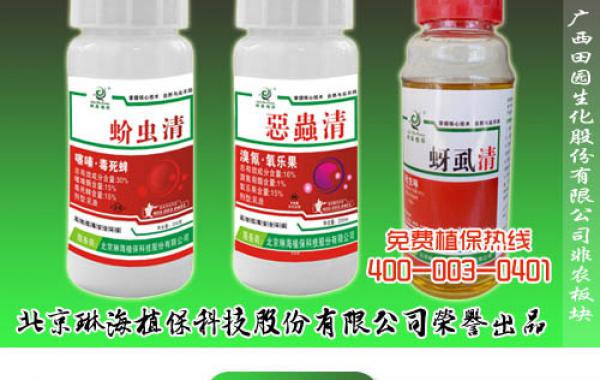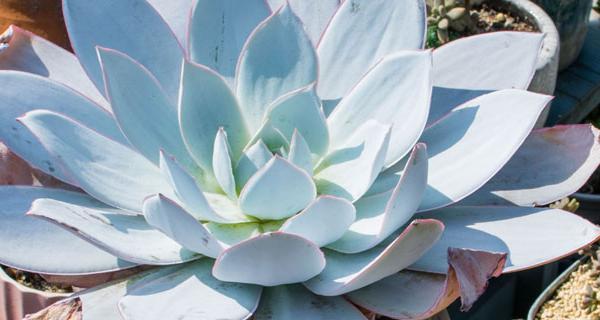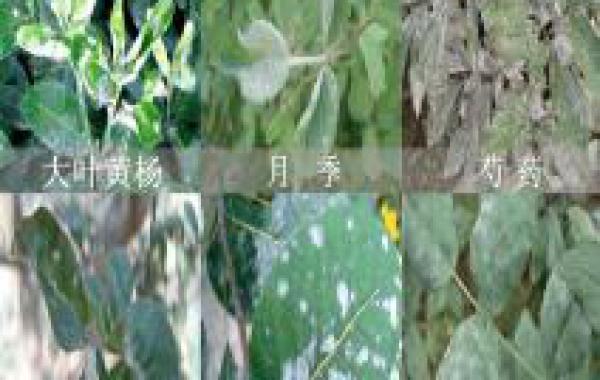What are the flower pesticides, how to make flower pesticides

With the rapid development of China's economy, people's pursuit of quality of life is also increasing. Flower planting can not only purify the air, but also beautify the environment, improve people's living environment, and attract many people to participate. However, in the process of planting flowers, insect pests seriously affect the growth of flowers. Therefore, the use of chemical products such as flowers and pesticides for control has become a basic knowledge that must be understood. Let's take a look at what flower pesticides are available and how to make them.
Common insect pests in flowers
Scale insects
Harm: scale insects are still the main pest species of potted ornamental plants placed in the greenhouse due to the restriction of ventilation conditions, lack of light and high humidity. Such as green woolly scale on kumquat, gray pink scale on yew, pink scale on Fusang, chaff scale on magnolia, tortoise wax scale and red wax scale on camellia, horned wax scale on holly, black helmet scale and oyster shield scale on cycad, wheel shield scale on rose, Koch's white shield scale on smile and bran shield scale on Magnolia, giant tumor oyster scale on orchid, white shield scale on brown bamboo, round shield scale on ivy The coconut shield scale on the loose-tailed sunflower, the sagittal shield scale on the four seasons cinnamon and so on. The species of scale insects on each kind of flower are very different.
Aphids
Harm: with the increase of temperature and the increase of water supply, the harm of aphids on indoor ornamental plants will be more serious. Aphids suck the sap of newly drawn branches and leaves, which will affect the normal growth of the plant after the beginning of spring.
Whitefly
Harm: mainly greenhouse white whitefly, harming melon and leaf chrysanthemum, Fusang, rose, dry golden lotus, lantern flower, etc., followed by orange thorn whitefly, harming kumquat, golden bean, daidai, bergamot, rose, Bailan, Milan and so on, their harmfulness should not be underestimated.
Flower insecticides commonly used insecticides
1. Trichlorfon is a kind of organophosphorus preparation with high efficiency and low toxicity, and its poisoning speed is fast. it is commonly used to spray 1000-1500 times of the original solution to control rose leaf wasp, big coir moth, quasi-short-forehead negative locust, cotton leaf borer, inchworm, leafhopper, small earth tiger and other pests. Trichlorfon can not be mixed with alkaline agents.
2. Aldicarb has the effect of contact, internal inhalation and fumigation, and its effect is only 2-3 days. 25% wettable powder or 1000-1500 times EC are commonly used to control leafhoppers, aphids, whiteflies, scale insects and other pests, and should not be mixed with alkaline pesticides.
3. Omethoate has the effects of contact, internal inhalation and stomach toxic. it can control many piercing and chewing mouthparts pests, and has great acute gastrotoxicity to human and animals. 1000-1500 times EC is commonly used to control scale insects, aphids, whitefly, cinnabar spider mites, green bug bugs, thrips, leafhoppers, citrus night moths and other pests. Should not be mixed with alkaline agents.
4. Dichlorvos is a kind of organophosphorus preparation with high efficiency and low toxicity, which has strong contact, fumigation, stomach toxicity, wide insecticidal range, fast speed, short efficacy period and residual toxicity. Commonly used 50% EC 1000 times or 80% EC 1500 times spray to control whitefly, leaf mites, green bug bugs, aphids, scale insects, pomegranate armyworm and other pests. Be careful not to mix with alkaline agents. Dichlorvos EC is volatile and must be capped after taking the medicine. When the concentration is high, it is easy to cause drug damage to cherry blossoms and plum blossoms.
5. Malathion has the effects of contact, stomach toxicity and fumigation, with high efficacy, wide insecticidal range, residual period of about one week, low toxicity to humans and animals and safety. 1000-2000 times EC spray is commonly used to control aphids, red spiders, leafhoppers, thrips, scale insects, beetles and other pests. The stability of malathion is poor, and the efficacy time is not too long, so it can not be mixed with alkaline or strongly acidic pesticides.
6. Dimethoate is a broad-spectrum organophosphorus pesticide with high efficiency and low toxicity, which has the effects of contact, internal absorption and stomach toxic. generally, 40% EC 1000-1500 times or 60% wettable powder 3000-5000 times are sprayed to control aphids, red spiders, leafhoppers, leaf moths, whiteflies and other pests. 1 gram of medicine can also be used to add 20-40 grams of water to control mole crickets and other underground pests. Plum blossoms and cherry blossoms are sensitive to dimethoate and should be used with caution. Should not be mixed with alkaline agents.
7. Fenitrothion is a broad-spectrum insecticide, which has contact and stomach toxicity, or kills borer pests. Its efficacy is generally 3-4 days. 1000 EC is generally used to control aphids, moths, leafhoppers, heart-eating insects, scale insects, thrips, leaf mites and other pests. 2% powder can also be used for powder control, with a dosage of 1-3 grams per square meter. It is easy to cause drug damage to cruciferous plants and can not be mixed with alkaline pesticides.
Self-made method of Flower insecticide
1. Garlic juice
Take 250 grams of purple garlic, soak in water for a while, mash and take out the juice, dilute it with water for 10 to 20 times, then spray, which can control pests such as aphids, red spiders and shell insects, as well as powdery mildew and gray mold. Pouring this liquid into the basin soil can control nematodes, earthworms and so on.
2. Hot pepper boiled water
Take 50 grams of red dried pepper, add 1000 grams of water and boil for a quarter of an hour. After filtration, the supernatant is sprayed to control white whitefly, aphids, red spiders, bugs and other pests.
3. Soak tobacco leaves in water
Take 50 grams of tobacco (if you need to double it with tobacco stalks or cigarettes), add 1500 grams of water, soak for one day and night, rub repeatedly with your hands, filter, and then spray 0.1% Mel 0.2% neutral detergent to control aphids, red spiders, leafhoppers, whiteflies, thrips, bugs, leaf rollers and other leaf-eating pests.
4. Artemisia annua boiled water
Take 500g of Artemisia annua, add 2500 g-4000 g of water to boil for half an hour, filter and irrigate to control ground tigers and other underground pests and control blight at the same time. Artemisia annua boiled water 10 times liquid, can control aphids, red spiders and soft pests and so on.
5. Soap and water
Take general soapy water or use the remaining soap to break the head of thin slices, with hot hydration, according to 1:60 proportion to add water, cooling after spraying, can control aphids, red spiders. If you soak cigarette butts in soapy water (except soot), it can not only improve the effect of controlling aphids and red spiders, but also control thrips, whitefly and leafhoppers. But soapy water can not be used for a long time, otherwise it will cause basin soil alkalization.
6. Washing powder solution
It has a strong contact effect on insect pests. The detergent solution can dissolve the waxy layer on the surface of the insect and seep into the insect, blocking the stomata on the surface of the insect and suffocating it to death. The usage is: 200 to 300 times liquid can control leafhopper. 600-800 times can control red spiders, aphids and ostracods. Should choose neutral detergent to use.
7. Ginger juice
The ginger was mashed into mud, soaked in water 20 times for 12 hours, filtered and sprayed with filtrate to control leaf spot, coal fouling, rot, black spot, aphids, red spiders and leaf worms.
8. Baking soda solution
Take 5 grams of baking soda (also known as sodium bicarbonate), first dissolve it with a small amount of alcohol, and then add about 1000 grams of water to form a 0.5% concentration solution, spray plants, can control powdery mildew.
9. Orange peel liquid
Take 50 grams of citrus peel and soak in 500 grams of water for 24 hours. After filtration, the filtrate is sprayed on the leaf surface to control aphids, red spiders and leafminers, and pour into the soil to control nematodes. In addition, 1 part of citrus seeds and 5 parts of water can be soaked for 4-5 days, and then the flower seeds can be soaked in this solution for 10 minutes to control a variety of pests.
10. Pepper water and vinegar
50 grams of pepper, add about 500 grams of water to boil in the pot, boil into 250 grams of liquid medicine, when in use, add water 6-7 times spray to control whitefly, aphids and scale insects.
Rice vinegar is rich in organic acids, which has a good inhibitory effect on bacteria. Spraying 150 × 200 times diluted rice vinegar solution on the leaf surface, spraying once every 7 days and 3 times continuously for 4 times can control powdery mildew, black spot, downy mildew and so on.
Beijing Linhai Plant Protection Technology Co., Ltd. is the first enterprise in China with high efficiency plant protection technology in garden. the advanced R & D capacity makes the company always in the forefront of the same industry. The company carries out free technical guidance and training.
Garden and lawn technical guidance (free): 400003-0401.
Related
- What if the leaves of potted flowers turn yellow?
- Florescence Control of several Flowers
- Anti-freezing technology and post-freezing nursing technology of flowers
- What is the classification of flowers? What are the common methods of flower classification?
- Prevention and control of alkali and acid damage of flowers in courtyard
- Technology of Anti-freezing and restoring growth of Flower seedlings in greenhouse and greenhouse
- How does flower fertilization not hurt the root? Fertilization technology of flowers
- Key points of disinfection in flower greenhouse
- Several pesticides that are banned or used cautiously in flowers
- How to fertilize the flowers that watch the leaves?



